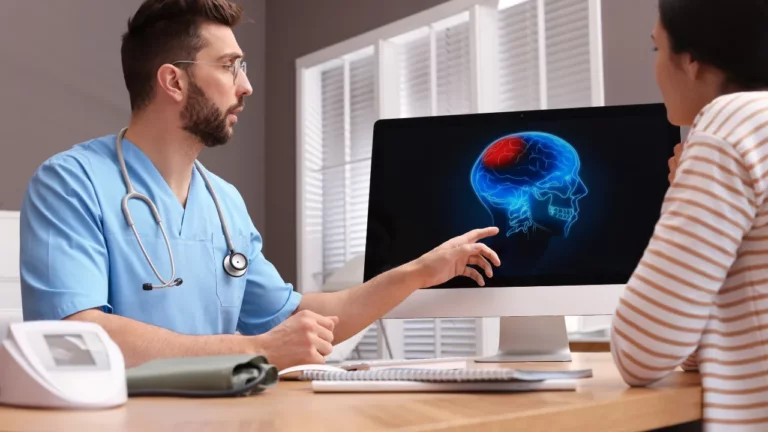Enhancing Patient Recovery and Reducing Provider Burden with RPM in Transitional Care
Transitional Care Management (TCM) is a critical process in healthcare that supports patients transitioning from an inpatient hospital setting back to their home or another community-based environment. The goal is to ensure a seamless handoff between hospital care and outpatient care, reducing the risk of readmission and improving long-term recovery. However, the transition period is often one of the most vulnerable phases for patients, and managing this process can place a significant burden on healthcare providers.
With Remote Patient Monitoring (RPM) technology, healthcare providers can ease this burden while improving patient outcomes. By enabling real-time monitoring of key health metrics, RPM technology provides a more efficient, proactive approach to managing patients during this critical 30-day transitional care period.
What’s Changed in Transitional Care Management (TCM)?
The Centers for Medicare & Medicaid Services (CMS) has recently updated its TCM guidelines to allow healthcare providers to bill additional CPT codes concurrently with transitional care management services, increasing flexibility for care teams and expanding the range of services they can provide (Medicare, 2024). According to the Medicare TCM Booklet:
“We added more CPT codes that can be billed concurrently with transitional care management services” (Medicare, 2024, p. 3).
This change allows healthcare providers to include more services under TCM billing, enabling them to deliver comprehensive care to patients without worrying about overlapping billing. These updates not only streamline the administrative side of TCM but also provide financial incentives for healthcare providers to adopt more integrated care models.
TCM Services and Requirements
The Medicare guidelines specify the essential components of TCM services:
“Required patient transitional care management (TCM) services include: Supporting a patient’s transition to a community setting, healthcare professionals accepting patients at the time of post-facility discharge without a service gap, and healthcare professionals taking responsibility for a patient’s care” (Medicare, 2024, p. 4).
These services must occur during the 30-day transitional period after a patient is discharged from an inpatient facility. RPM plays a pivotal role in meeting these requirements. With DrKumo’s RPM technology, healthcare providers can monitor key health metrics continuously, ensuring that they remain in control of the patient’s care even after the patient has left the hospital.
RPM enables providers to monitor vital signs, such as blood pressure, heart rate, glucose levels, and oxygen saturation, ensuring that patients’ health data is constantly monitored. If any abnormalities are detected, DrKumo’s RPM platform sends immediate notifications to healthcare providers, allowing them to take quick action before the situation worsens. This proactive monitoring supports efforts to reduce readmission rates, improve patient recovery, and maintain continuous care during the transitional phase.
Meeting the Requirements of TCM: How RPM Aligns with the Guidelines
The MLN Booklet specifies that during the transitional care period, healthcare providers must:
“Contact the patient or their caregiver by phone, email, or face-to-face within 2 business days after the patient’s discharge” (Medicare, 2024, p. 5).
With DrKumo’s RPM technology, this contact can happen without requiring an in-person visit. Healthcare providers can engage with patients remotely, ensuring they receive timely care without the logistical challenges of scheduling multiple in-person visits. By incorporating real-time health monitoring, DrKumo’s RPM technology ensures that healthcare providers stay connected with their patients, making early intervention easier and more efficient.
How DrKumo Reduces the Burden on Healthcare Providers
Managing the 30-day TCM period can be overwhelming, especially when dealing with multiple patients, complex conditions, and administrative tasks. DrKumo’s RPM technology offers healthcare providers a powerful tool to reduce this burden in several key ways:
- Continuous Monitoring and Early Detection
DrKumo’s RPM technology solution enables continuous monitoring of essential health metrics. According to the Medicare guidelines, one of the requirements for TCM is to provide “Moderate or high complexity medical decision making for patients with medical or psychosocial problems,” (Medicare, 2024, p. 4). RPM enables providers to make these decisions more easily by offering real-time data that identifies changes in the patient’s health status.
By detecting changes in health parameters early, healthcare providers can intervene before the issue becomes critical. For example, if a patient’s blood pressure rises sharply or their blood glucose levels fluctuate, DrKumo’s system generates notifications for providers, enabling timely review and action to address potential health concerns or follow up with patients.
- Reducing the Need for Frequent In-Person Visits
For clarification, some face-to-face visits are required as part of TCM. According to the updated CMS guidelines:
“You must provide 1 face-to-face visit within the timeframes described by these 2 CPT codes:
- 99495 — Face-to-face visit, within 14 calendar days of discharge
- 99496 — Face-to-face visit, within 7 calendar days of discharge” (CMS, 2024, p.7).
So, yes, those in-person visits are still necessary. However, here’s where RPM technology comes in. RPM doesn’t completely replace or eliminate the need for face-to-face visits, but it can significantly reduce the burden of managing routine follow-ups.
How? Well, with RPM, healthcare providers can monitor real-time health data such as blood pressure, heart rate, and glucose levels remotely. This allows healthcare teams to stay on top of a patient’s recovery and catch potential issues before they escalate. For example, if a patient’s vitals start trending in an unhealthy direction, the system notifies the care team, enabling them to intervene early—before things worsen and a hospital readmission becomes necessary.
This means that providers don’t have to spend precious time on basic check-ins during face-to-face visits. Instead, they can focus on the more critical aspects of care, like addressing any complications that may have arisen, because routine monitoring is being handled seamlessly through RPM.
In short, RPM streamlines the process by reducing unnecessary in-person visits for routine follow-ups and allowing providers to focus their face-to-face care on what truly matters. It’s about being more efficient and using technology to make patient care more proactive.
- Improving Medication Management and Adherence
Medication non-adherence is a common challenge during the transitional care period. RPM helps support medication adherence by sending reminders and enabling providers to monitor indicators, such as health metrics or patient-reported data, that suggest adherence. As the Medicare guidelines highlight, medication reconciliation is a crucial part of TCM:“You must provide medication reconciliation and management on or before the face-to-face visit date” (Medicare, 2024, p. 7).DrKumo’s RPM technology enables providers to monitor medication adherence remotely, offering additional support to patients who may struggle with remembering to take their medications or managing complex regimens. This helps prevent avoidable complications, such as medication errors, which could lead to hospital readmissions.
Why Healthcare Providers Should Choose DrKumo
DrKumo’s RPM technology offers healthcare providers an efficient, scalable solution for managing TCM. With real-time monitoring, DrKumo helps reduce readmissions by providing continuous patient oversight, ensuring that issues are detected early and addressed promptly. This proactive approach saves time, reduces the need for frequent in-person visits, and allows providers to focus on critical care.
Moreover, DrKumo streamlines administrative tasks, with automated notifications and secure data transmission, ensuring compliance with regulations like HIPAA. The platform integrates seamlessly with existing care models and supports Medicare reimbursement codes, making it financially viable and easy for providers to implement. Choosing DrKumo means delivering higher quality care while improving operational efficiency.
Takeaways
The integration of RPM technology into TCM has the potential to significantly ease the burden on healthcare providers while improving patient recovery outcomes. By leveraging DrKumo’s RPM platform, providers can monitor patients remotely, prevent readmissions, ensure medication adherence, and streamline administrative processes.
With the recent updates in Medicare reimbursement codes and the growing demand for more efficient care models, DrKumo’s RPM technology is a smart investment for healthcare providers looking to enhance the quality of care they provide while improving operational efficiency.
Ready to enhance patient care and streamline your transitional care management? Contact DrKumo today to learn how our RPM platform can help you provide proactive, efficient care while reducing provider burden.








